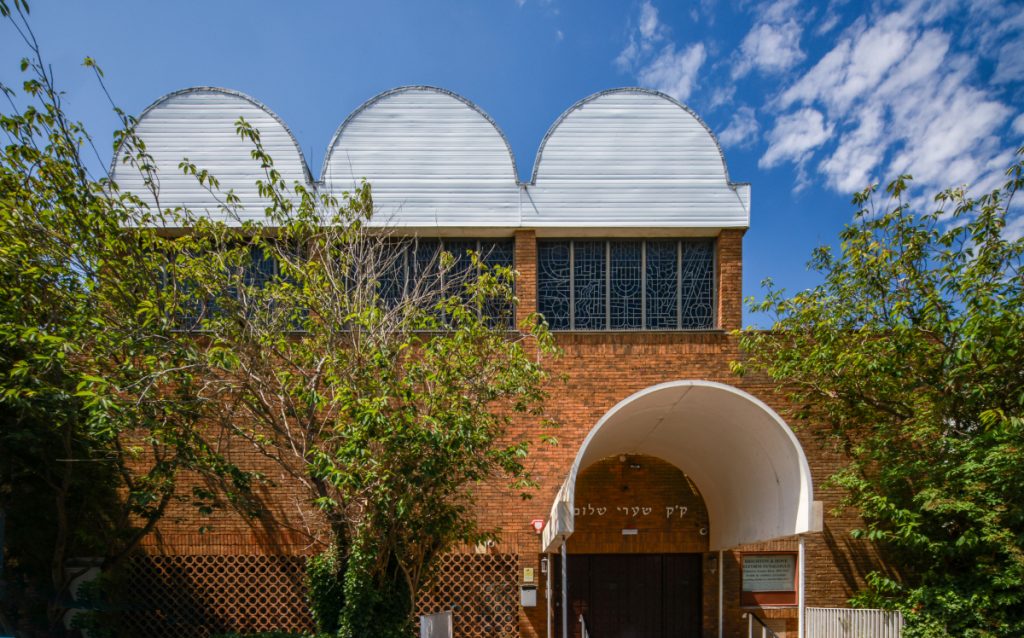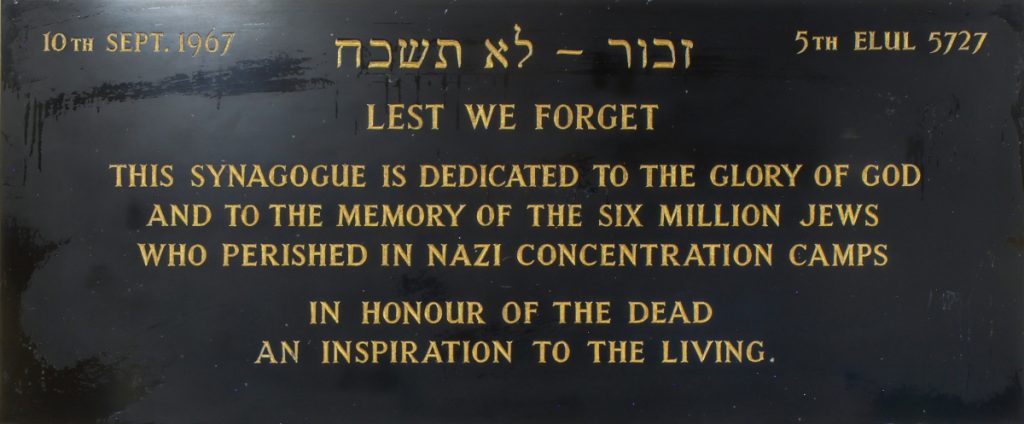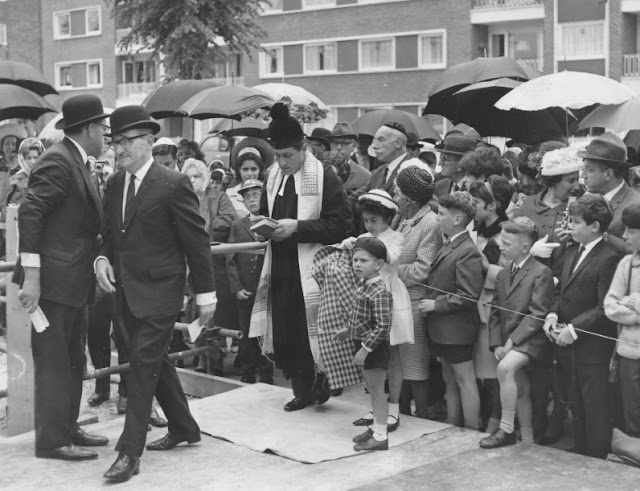The Story of our synagogue is an extraordinary one.

Rabbi Rosenblum, our founding Rabbi, came to England in February 1939, just 2 weeks before the Nazi invasion of his native Czechoslovakia. He followed in the footsteps of his brother, who had also found refuge in England. The rest of his family – parents, grandparents, brother and two sisters – were to perish in Auschwitz.
In 1956 he came to Hove to serve a Jewish community of just 5 families. In under a decade, this number had swelled to a flourishing community of over 300 members. It was time for a synagogue to be built that could hold them all.
In an act of enormous generosity, Lord Cohen sold the land for the new Synagogue for the price he had bought it for 20 years earlier. Nobody knows how Rabbi Rosenblum persuaded him to do this.
Even then, the local community had to be persuaded to accept a synagogue in their midst. At first permission was denied. But undeterred, Rhoda Rosenblum (the Rebbetsin) and a fellow congregant went door-to-door gathering signatures of support.
In the words of a founder member, the funds for the building were raised ‘brick by brick’ – each individual giving whatever he could towards the costs.
The synagogue members clearly were ambitious and employed the best architects, the renowned and award winning firm, Derek Sharp Associates.
The intention of the founding families, cognisant of Rabbi Rosenblum’s own personal loss as well as their own, was to dedicate the synagogue building to those who perished in the Holocaust.
It is important to remember that historically, the UK was moving from minimal popular understanding of the Nazi atrocities to a period of growing recognition and discussion. Thus this dedication was a bold move, at the forefront of its time.
The dedication was due to be carved into the foundation stone of the building:
“THE FOUNDATION STONE OF THE BRIGHTON AND HOVE NEW SYNAGOGUE WAS LAID BY RABBI E.S.ROSENBLUM ON (HEBREW AND ENGLISH DATE)
IN DEDICATION TO THE GLORY OF GOD AND IN MEMORY OF THE SIX MILLION JEWS WHO PERISHED IN THE CONCENTRATION CAMPS DURING THE 1939-1945 WORLD WAR.”
Within a year, the community had a change of plan. The Board of Deputies had cautioned against such a display as a possible magnet for antisemitic attacks. It was therefore unanimously agreed to bring the dedication inside.

And so, on 10th September 1967, the Synagogue was opened, the plaque was unveiled by Rabbi Rosenblum himself. Rabbi Dr. Van der Zyl and a host of other dignitaries were in attendance.

The communal AJEX Hall – was dedicated separately in June 1968. Major General J. A. d’Avigdor Goldsmid – the highest ranking Jewish officer in the British Armed Forces – was guest of honour. The hall was called Ajex Hall after the Association of Jewish ex-servicemen and women who gave their lives in two world wars – a fitting complement to the Holocaust Memorial synagogue.
At the heart of the synagogue, the beloved Czech scrolls, survivors of the Holocaust themselves, and entrusted to the original congregation in 1955 were housed in an Ark of light, protected by a set of specially commissioned stained glass Ark Doors and crowned by a magnificent set of Holocaust Memorial stained glass windows. These were commissioned from the artist John Petts (dates) and were a work of a three-year collaboration between himself and Rabbi Rosenblum.
Since 1995 the synagogue has been listed as a Holocaust Memorial in the War Memorials Register at the Imperial War Museum.
Listing at Imperial War Museum